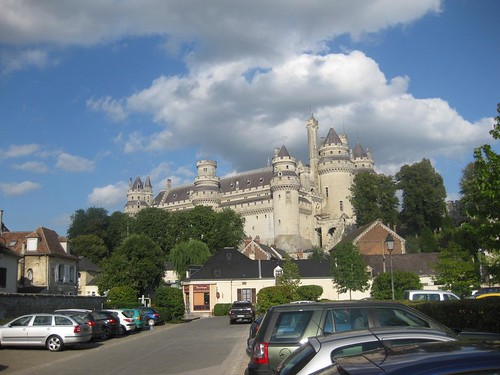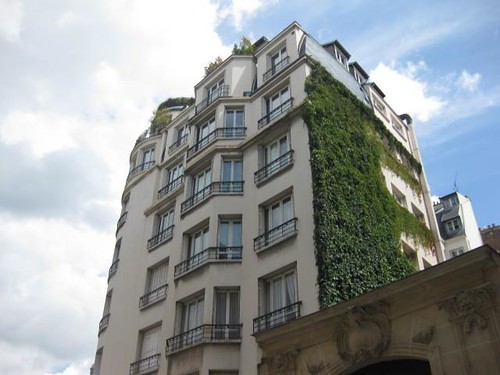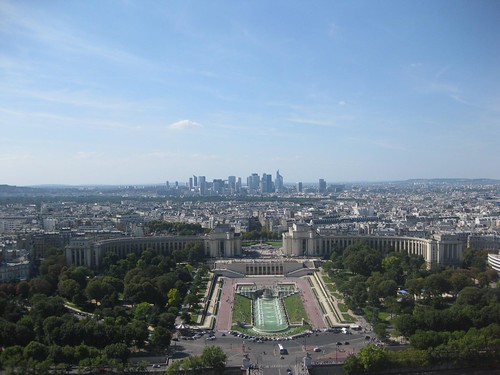Architects of the State: Rise and Fall of the Beaux Arts – 2
1872 and beyond: Stress Fractures
You can read Episode 1 of our 2 part series on Architects of the State: Rise and Fall of the Beaux Arts here.

In 1872, Napoleon III’s Empire collapsed spectacularly, and France’s Third Republic emerged from its ruins. In its early years, the new Republic embraced the Ecole des Beaux Arts. Paris’ Hotel de Ville (above), which burned down in 1872, was rebuilt from its stone husk in the Beaux Arts style – once again we cas see the footprint of the original gothic building in the steep roofs and soaring spire. The exterior is decorated with two special monuments: one to Science and and one to Art – two favorite subjects of the Ecole. In fact, both those subjects were crucial to one of the most important French constructions of the 19th century.

The Grand Palais (above) was finished in 1900. It was designed by four Beaux Arts architects and built over just three years. The building itself is intensely classical, with a large portico of Corinthian columns between a series of perfectly rounded arches. But the roof is an arcing glass and steel construction supported only by the outer walls of the palace. It formed a giant skylight for the Paris Exhibition of 1900- it was intended as a monument to French art, and the science employed to create it. By the turn of the century, the Ecole des Beaux Arts had made an indelible impression on the Parisian landscape. But not everyone appreciated the efforts of the Ecole – indeed, not everyone believed it should even exist.

The most vocal and vitriolic critic of the Ecole was Eugene Viollet le Duc. Viollet le Duc was a polemic writer and self taught architect. He argued the architecture of the Ecole was flat, irrational and needlessly classical, not to mention foreign in origin! Viollet le duc was an archaeologist, and spent many years restoring native French medieval architecture such as Notre Dame and the incredible Chateau Pierrefonds (above). le Duc believed the French should look to their own past past for architectural inspiration, rather than to distant Rome or Ancient Greece. In the 1870s, le Duc was invited to speak at the Ecole. But when he arrived the vengeful students reacted against his vitriol by throwing coins at him! Unfortunately for the Ecole, his criticism did not cease.

After le Duc’s death in 1879 the Beaux Arts faced yet more serious challenges. Architects of the newly born modernist movement decried Beaux Arts‘ reliance on Roman ruins for inspiration, and its extravagant use of decoration. They also rejected the strict teachings of the Ecole – this devotion to Rome stifled individual creativity. By the 1930s, Paris became the city of Art Noveau, Art Deco and modernism. Eventually, the Ecole surrended to this rising tide: the school still exists today, but it teaches a much wider variety of styles and encourages students to follow their own creative ambitions.

The legacy of the Beaux Arts doesn’t end with the 19th century. The famous Samaritaine department store in Paris (above) seems an unlikely successor to the traditions of the Ecole. It eshews the decorative intensity and the classical language that the Ecole admired. But it does retain the symmetry of the Beaux Arts, as well the schools’ experimentation with steel and glass. The stone columns between the glass windows retain classical proportions.

It is easy to see why the Ecole des Beaux Arts fell out of favour. But it is also hard to dismiss the importance of this school of architecture in France. The Beaux Arts was the language of civic architecture from the restoration of the monarchy well into the third republic. Beaux Arts architects experimented with new engineering techniques and created some of France’s most inventive buildings (such as the modernist Palais du Challiot (above) designed by graduates of the Ecole for the 1937 Exposition). Students of the Ecole may have adhered closely to Classical Roman architectural theory, but their ability to create new buildings from these ancient ideas demonstrates the creativity and flexibility of the Beaux Arts.
The Ecole left an indelible mark on the Parisian landscape throughout Monarchy, Empire and Republic, and France would not be the same without it.
Thank you Thomas Harvey for this insightful guest post. Thomas is a Melbourne based architecture student who was recently impressed by what he saw on his first trip to France.







Thank you Thomas for sharing your knowledge. I am myself very interesting by architecture and I learnt a lot by reading your article. I am French and I lived in Paris ten years, I am now in Melbourne. The next time I will come back to Paris, I will remember of your writing! Bonne journée Thomas et encore merci.